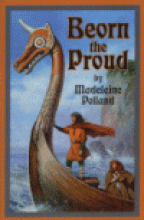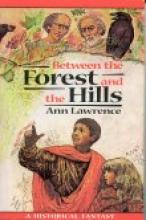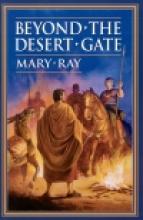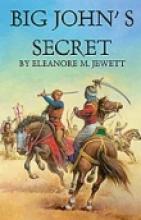No name
Beginnings
Behold and See 3
I've been telling my friends who've asked about this book that I've never felt enthusiastic about a science textbook until now. This beautiful book, printed in full color on thick, glossy pages is really remarkable. The author, Suchi Myjak, is a Catholic homeschool mother with a Bachelors and Masters in Electrical Engineering. She worked in a chip design group at Intel Corporation until the birth of her first child.
There are three areas in which I think this book particularly excels...
First are the beautiful watercolor illustrations by Cameron Smith. (You can view some of his works on his website at http://www.frangelico.org). These illustrations are engaging and will really help draw students into the wonder and amazement of God's creation. The text also includes a number of beautiful photographs.
Second is how engaging the book is. Now, the word 'engaging' is thrown around a lot and usually has to do with how readable and interesting a book is. Behold and See 3 is certainly engaging in this respect. But it goes even deeper to a more complete meaning of 'engaging' that involves the active participation of the student in more fully understanding concepts by use of reflective questions, games, comparison charts and meaningful (but simple) experiments and hands-on activities (like mapping the tongue and making a mini-ecosystem in a bottle).
Third is its Catholic content. Behold and See 3 exceeds my expectations in this regard. Catholic material isn't just tacked on to an ordinary text, it is naturally incorporated into the text. It actually uses ideas familiar to Catholic children from the spiritual realm to better understand science (while retaining an excellent sense of the purpose of science in helping our children get to heaven). For example, in the introduction to the Chapter on Matter, the author helps children understand the concept of matter by contrasting it with the spiritual world that we cannot see and that science cannot study. Also, religious stained-glass windows are used to enhance part of the discussion about light and EWTN is used as an example of something that uses satellite technology. The text is further enhanced by quotations from the Holy Bible and the Catechism of the Catholic Church.
After an introductory chapter that explores the idea of what science is, why we study it, some basics on the scientific method and instructions for starting and keeping a science notebook, the text covers three primary areas:
The first segment, on Physical Science, includes chapters on Matter, Force and Energy and Astronomy. In this segment, children will study: states and properties of matter, mass and volume, forces, gravity, magnetism, friction, light, sound, the Earth's crust and atmosphere, the sun, the moon, keeping time, day and night, the solar system, the stars, space travel and satellites.
The second segment, Life Science, includes chapters on Animals, Plants and Ecology. This segment covers: animal classification, animal protection, hibernation and migration, the differences between animals and man, 'wild' and 'tame' flowers, parts of plants, seeds and growing plants, what plants need to grow, plants we eat, plants and the seasons, trees, animal habitats, food chains and food webs, ecosystems and stewardship of God's creation.
The third segment, on the Human Body, includes chapters on Anatomy, the Senses and Nutrition/Health. This segment covers: body proportions, skin pigment, the skeleton, joints, muscles, the heart, lungs and breathing, circulation, the brain, the five senses, nutrients, a balanced diet, food groups, the virtue of moderation, exercise and food safety.
I'm really very, very impressed with this book. Full-color books like this are expensive to produce, particularly for small Catholic companies, but I think that the quality of this text is well-worth its price (approximately $45).
This book was donated for review by Catholic Heritage Curricula
Bella at Midnight
Beorn the Proud
Bernadette: Princess of Lourdes
30 minute video
Betsy-Tacy
Between the Forest and the Hills
When Falx, a young orphan disillusioned with the prospects of life in his brother's household decides to runaway to Rome (under the influence of a talking raven!) "trouble" becomes unavoidable. He befriends a lost Saxon girl and meets up with a strange but benevolent merchant who plays a significant role in the adventures awaiting the town. I found parts of the book to be exceedingly funny (particularly a scene involving a bishop, some bees and some rather superstitious Saxons), but the more subtle humor would probably be best appreciated by the somewhat "well-read" high schooler, rather than the reluctant reader.
Beyond the Desert Gate
The story illustrates the struggles of those caught up in the brutality of Roman rule, the horror of the fall of Jerusalem and touches upon the mysteries of suffering and death. While dealing with the different sorts of reactions that people have to the evils of Rome, the story does highlight - albeit in a subtle way (as good literature should) - the true paths that Christ showed us. An especially interesting contrast can be seen between the courage of the Christians before death (inspired by Christ and given his grace) with the Jews rebelling against Rome (whose motivations involved patriotism, but also hate).
The story is not overly intense, gory, or otherwise objectionable, but dwells upon serious and mature themes of death and suffering in a way suitable to teens and adults. Although the book is a sequel to The Ides of April (which is not apparent until well into the book), it could be read on its own as well.
Copyrights 1977/2001
Big John's Secret
This is an interesting and engaging story for middle-school children - especially 5th to 8th grade. It offers a surprisingly balanced view of the Crusades as well as beautiful themes of faithfulness and forgiveness. While written at an appropriate level for young children, the author is honest about the evil and destruction that came out of the previous crusade (the infamous 4th crusade in which the Christians sacked Constantinople). In the course of discussion, the characters further distinguish between those who come to the Crusades to free Christian prisoners and those who are after glory and material gain. Finally, this subtle running theme about motive and warfare is brought to a climax in the person of St. Francis of Assisi.
While some of the plot comes across as a little predictable (making it less appealing, perhaps to high schoolers), the themes and major events are thoughtful and extremely well-researched. The segment in which Big John crosses paths with St. Francis of Assisi is based on a true incident in which the Saint went into the Saracen camp to preach to the Sultan about Christ.
This book was donated for review by Bethlehem Books









